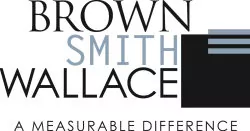As a financial institution, it can be difficult to achieve a happy medium between revenue goals, customer service, and the pressure on all levels within the organization to meet these goals. Unrealistic sales goals, peer pressure and the wrong incentive mechanisms recently created one of the largest financial scandals seen since the mid-2000 financial crisis. According to a New York Times article, employees making as little as $12 an hour at an international banking and financial services company said they felt pressured to make their sales goals by reaching out to friends and family or calling customers after hours as the threat of being fired lingered over them every day.
The banking and financial services industry is the top industry victimized by fraud, according to the Association of Certified Fraud Examiners' 2016 "Report to the Nations," which also states that a typical organization loses 5% of its annual revenue to fraud. Adding in the fines that will be most likely levied upon a financial institution in these cases of fraud can easily increase this number. The Wall Street Journal reported that the bank scandal cost at least 5,300 employees their jobs over five years and the bank a fine of $185 million as regulators deem the practice as widespread and illegal.
This situation will undoubtedly result in greater focus on how institutions can collectively identify trends of potential illegal activities performed by employees. Here are some tips to consider:
- Reevaluate compensation criteria. Make it part of the institution's strategic planning to consider how compensation factors could incentivize all levels of employees to not act in their customers' best interest.
- Review your policies and procedures. Determine if they are in line with your strategic goals, applied consistently and truly understood by employees through frequent training sessions.
- Implement a continuous monitoring system. Data analytics tools can identify timely trends of potential fraudulent activity or unethical behavior by analyzing high-risk activities and transactions performed by employees.
- Review your fraud protection mechanisms and internal controls. Determine if they can withstand intentional internal fraud or prevent fraudulent activity based on unrealistic expectations and goals. Typically, fraud preventative controls are well designed to protect against outsider fraud but not always geared toward internal fraud.
- Establish a tone from the top. From the board level to senior management to line management, proper corporate governance and oversight should be in place to encourage ethical – and punish unethical – behavior, which is an important factor in combating fraud.
As the regulators digest the released details of this investigation that spanned a five-year timeframe, expectations of additional oversight and monitoring of such areas will increase exponentially in the upcoming months and years.
Download the Association of Certified Fraud Examiners' most recent fraud statistics in this infographic.
To discuss options that would be realistic within your institution, please contact Amy Ribick, Principal, Advisory Services, at 314.983.1347, aribick@bswllc.com, or Bianca Sarrach, Principal, Advisory Services, at 314.983.1365, bsarrach@bswllc.com.
The content of this article is intended to provide a general guide to the subject matter. Specialist advice should be sought about your specific circumstances.


